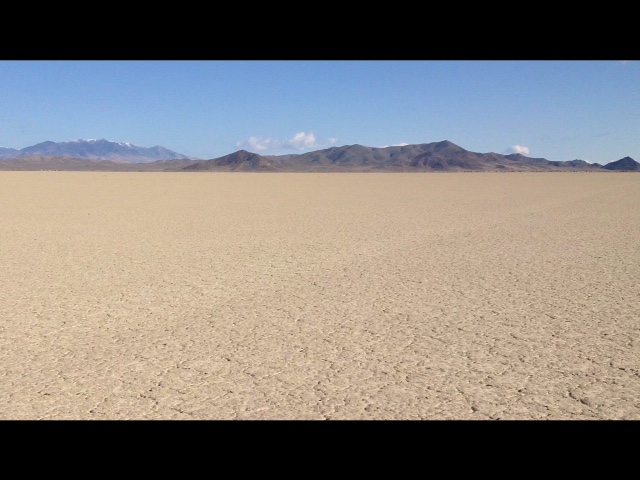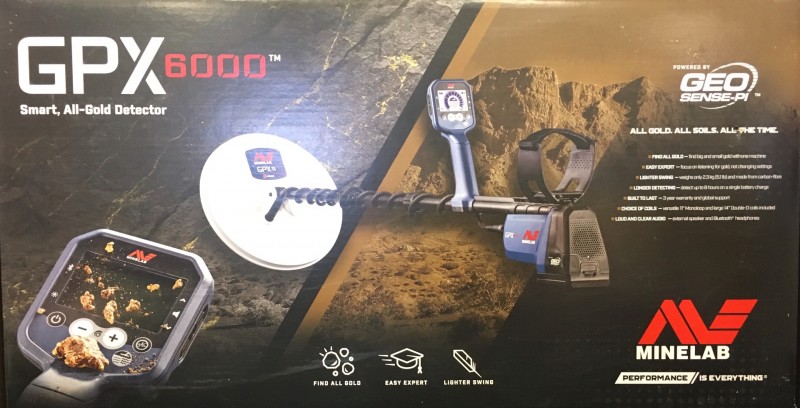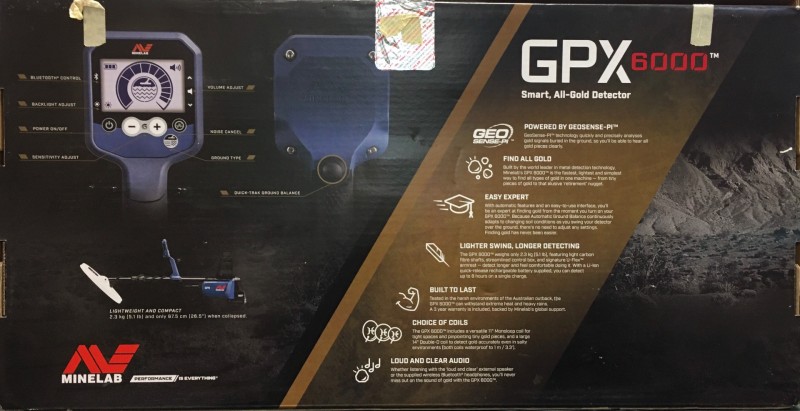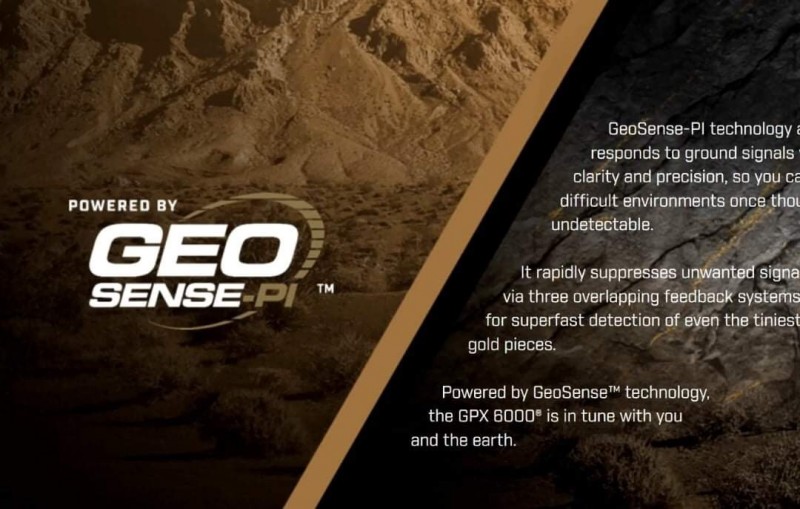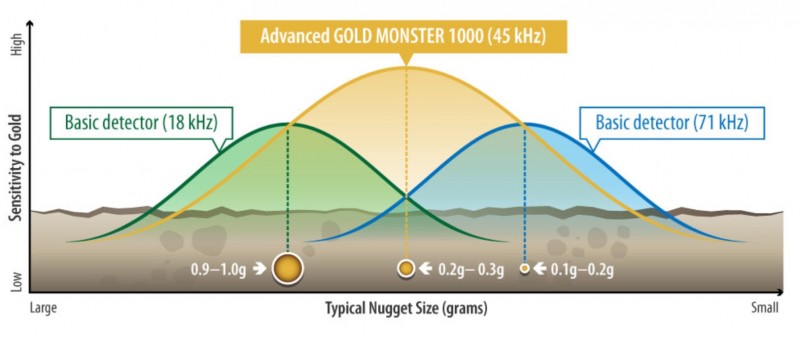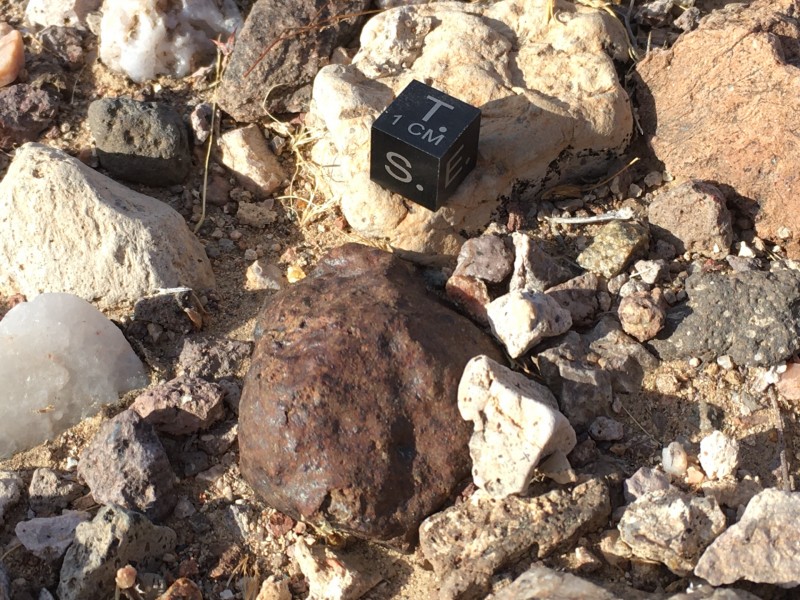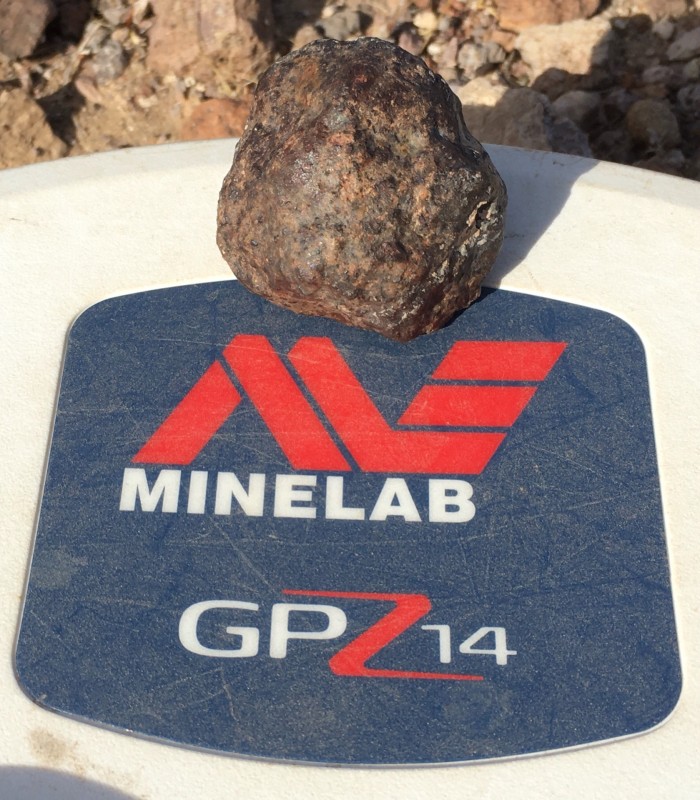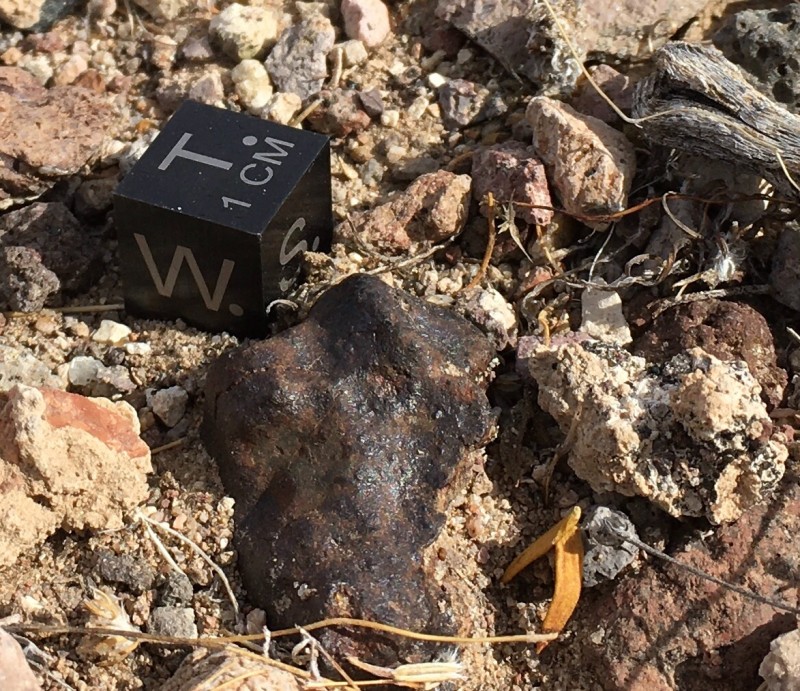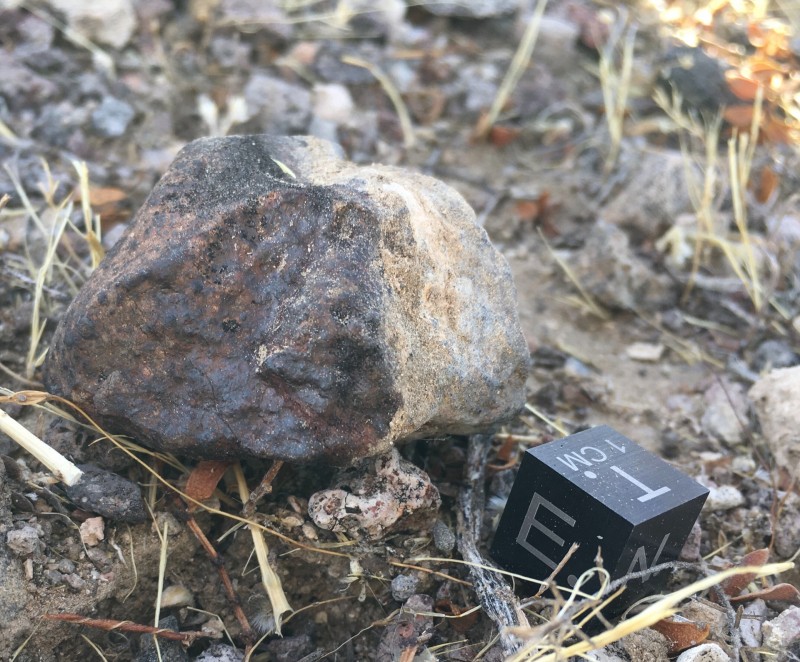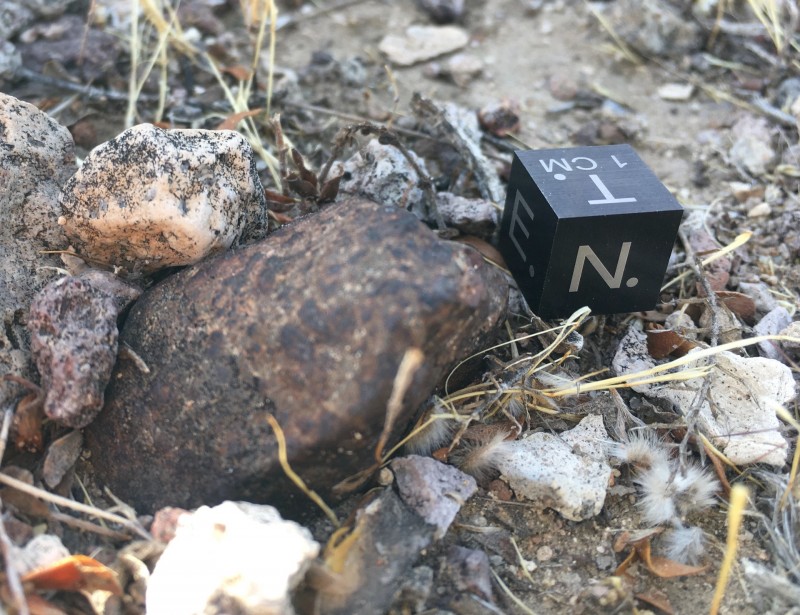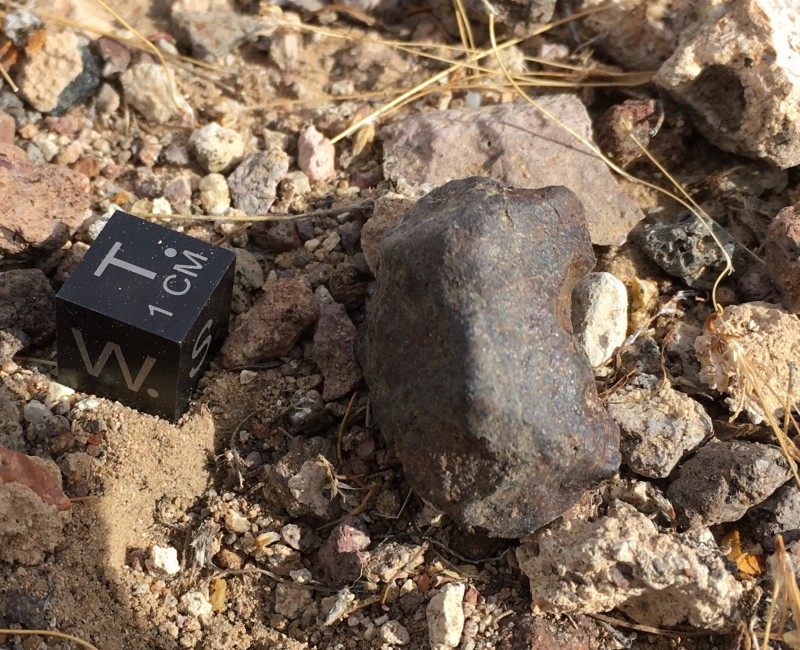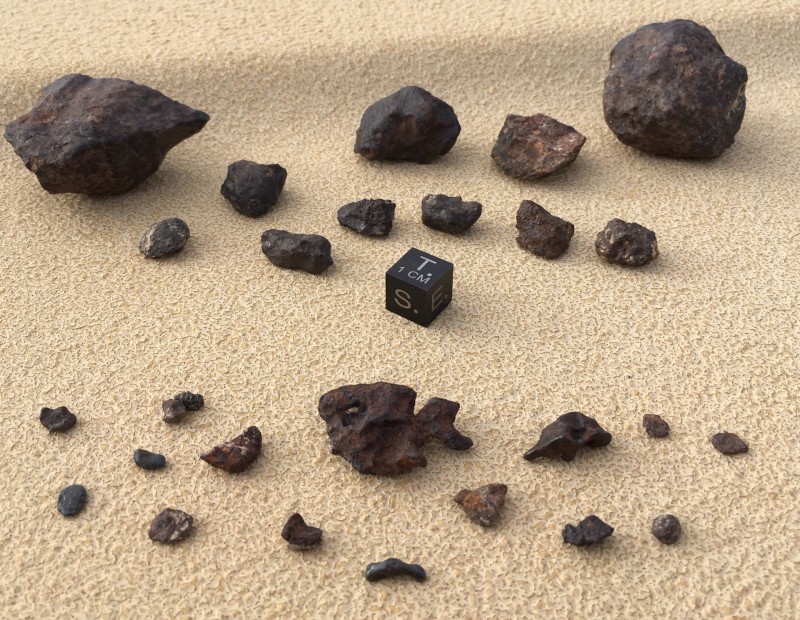-
Posts
1,185 -
Joined
-
Last visited
Content Type
Forums
Detector Prospector Home
Detector Database
Downloads
Everything posted by Lunk
-
I'm guessing it saw the flake at 2” to 3”, and the space rock at 4” to 5”. Of course, the 11” mono loop should get more depth than the 14” DD.
-
Rick, I just edited my post to include that information.
-
Okay, I hit the Minelab booth at the Quartzsite gold show this morning, and got to swing the GPX 6000 over a couple of targets that I brought along, asked Debbie some questions about the machine and its tech, as well as snapped some photos of the box. So one of the targets I brought is a tiny flake of a nugget that is invisible to the Zed, but a VLF will hit on it all day long. The GPX 6000 with the 14” DD coil in EMI cancel mode had no trouble seeing it, which is quite impressive; the detector was set up this way because there was too much EMI present to operate the 11” mono coil. I also brought along a small, 1 gram chondrite meteorite, and waving it over the coil produced a significant response from the detector. So the GPX 6K is definitely super sensitive. Debbie showed me that, while the pitch of the threshold tone is not adjustable, the threshold tone can be turned on and off by a long press of the normal/difficult ground type button. The threshold pitch to me seems to be preset to around the default pitch of the GPZ 7000, about halfway between the highest and lowest pitches. I asked about the price and availability of any accessories, like the 17” mono coil, and the reply was that there is no information yet. I also asked if she knew what GeoSense is and how it works, to which she answered that the machine is continuously adjusting to the ground and EMI. When I asked if the 6000's normal and difficult timings are blends of the soil timings that are used in the GPX 5000, the answer was no. I didn't see any kind of port on the detector that would enable a connection to a computer for a software update, and Debbie doesn't think it is updatable. You'll notice on the box that the weight of the detector is 5.1 pounds, and I'm assuming that is with the 14”DD coil attached, as it is noticeably heavier than both the 11” and 17” mono coils. Minelab GPX 6000 Data & Reviews
-
Yeah, it'd be more like sweltering in place.
-

Minelab GPX 6000 Full Reveal In February 2021?
Lunk replied to Steve Herschbach's topic in Detector Prospector Forum
That seems to be the speculative consensus, as unwanted signals include EMI and ground noise, both localized and variable. -

Minelab GPX 6000 Full Reveal In February 2021?
Lunk replied to Steve Herschbach's topic in Detector Prospector Forum
The big RV show is over, so it's not too bad now. -

Minelab GPX 6000 Full Reveal In February 2021?
Lunk replied to Steve Herschbach's topic in Detector Prospector Forum
As Aureous noted above, the only thing we've seen so far regarding Geo-Sense PI is that “it rapidly suppresses unwanted signals via three overlapping feedback systems for superfast detection of even the tiniest gold pieces.” Exactly what mechanisms these feedback systems employ may never be revealed by Minelab for proprietary reasons, just like they've never revealed the exact proportions of the Multi-IQ weighted frequencies used in the Equinox. Regardless, the fact that the GeoSense PI tech will allow us to detect difficult environments once thought undetectable, as indicated below, is all I need to know about it, as it will effectively open up new ground for prospecting. Happy days are here again! 🙂 -
And if you want real adventure, don’t even pack any food along; just go full-on Bear Grylls: https://www.storypick.com/bear-grylls-foods/ 🤣 And as for what he drinks...I won’t even go there.🤮
-

Minelab GPX 6000 Full Reveal In February 2021?
Lunk replied to Steve Herschbach's topic in Detector Prospector Forum
I will hit the Q show tomorrow and ask Debbie, the Minelab rep, if she knows what GeoSense is. I doubt she does, but if so, will she even be allowed to talk about it yet? -

Minelab GPX 6000 Full Reveal In February 2021?
Lunk replied to Steve Herschbach's topic in Detector Prospector Forum
Well of course the GM 1000 has no timings, since it's VLF - that's where the comparison diverges - but according to what we know so far, there are 4 timings on the GPX 6000: Normal, Difficult, EMI cancel and Salt cancel, all of which are manually selected via buttons on the control panel. Nothing so far has indicated automatic switching of timings. But yes, it would be cool if there were other timings being utilized behind the scenes to compensate for changes in the detecting environment as they occur, certainly. Perhaps GeoSense runs multiple timings all at once, not unlike the multi-frequency tech of the Equinox. In any case, it will be interesting to find out just what makes the GPX 6000 work its magic. -

Minelab GPX 6000 Full Reveal In February 2021?
Lunk replied to Steve Herschbach's topic in Detector Prospector Forum
Since the GM 1000 does all that too, I'm assuming GeoSense involves something more. Oh, the anticipation!😀 -

Minelab GPX 6000 Full Reveal In February 2021?
Lunk replied to Steve Herschbach's topic in Detector Prospector Forum
And we will probably have to wait until Minelab publish a Knowledge Base Article by Bruce Candy and/or the engineers that explains what GeoSense PI is and how it works, like they did with the ZVT tech. I would imagine that there will also be a marketing diagram of some sort that will describe it without going into too much detail, like they did with the ultra-wide dynamic range 45 kHz tech of the Gold Monster 1000. -

Some East Coast Nuggets Found By A Detector
Lunk replied to PG-Prospecting's topic in Detector Prospector Forum
Yes, I also have observed that for some reason, hunters are allowed to obtain permits for their hobby on government lands, while being denied to other groups like detectorists. Other examples of this are wildlife refuge areas and military reservation lands. -

Minelab GPX 6000 Full Reveal In February 2021?
Lunk replied to Steve Herschbach's topic in Detector Prospector Forum
Or it could simply be that the GPX 14 decals hadn't even been made yet, so a GPZ 14 decal had to be used to show the decal positioning for the photo. -

Some East Coast Nuggets Found By A Detector
Lunk replied to PG-Prospecting's topic in Detector Prospector Forum
Nice looking nuggets; well done! -

Plenty Of Excitement For The Enterprising Folk
Lunk replied to nebulanoodle's topic in Detector Prospector Forum
Good job, GoldTree!- 9 replies
-
- nuggetfinder
- gold found
-
(and 1 more)
Tagged with:
-
Steve, your astute observation mirrors what I am seeing. Minelab are now advancing 3 distinct lines of gold detecting technologies: VLF (GM 1000 & EQX), PI (SDC & GPX) and ZVT (GPZ). Each technology has strengths and applications unique unto itself, and so, like you said, they all have their place. It just makes good business sense to continue to refine each line with new detector models instead of just one of them. I envision a multi-frequency VLF GM 1100 in the future, as well as a lightweight and ease of use ZVT GPZ 7500. And of course the next generation of PI GPX is nearly upon us with the imminent release of the 6000. The future never looked so bright!😎
-
Hella good times with great friends; truly, a greater treasure cannot be found. Gerry, I'm so glad everyone could attend this memorable outing. Thanks for sharing the story and some great pics. Just a couple so far, Freakman; looking good!
-
Nice haul, Jason!
-
BTW, I'll be a stowaway inside Gerry's suitcase.😎
-

Official Minelab GPX 6000 Page
Lunk replied to Steve Herschbach's topic in Detector Prospector Forum
Steve, I've been visiting that page religiously every day for awhile now, in rapt anticipation.😀 -
Yes, it's all volcanic material.
-
GotAU, the south side of I-40 is relatively mild ground, but the north side is very difficult ground with lots of hot rocks. The PI & ZVT tech excel in that environment, but I have used the Gold Monster successfully, as detailed here: https://www.detectorprospector.com/forums/topic/3604-a-monster-month/
-
Thanks Ht, It depends on the type of meteorite I'm going after, as well as the type of ground they're in. The Zed is superb at finding irons and the H and L type chondrites in difficult ground. VLF detectors are the go when trying to locate LL type stones, and are perfectly capable of detecting all of the above in benign ground.
-
Looking to get my annual meteorite fix, I recently embarked on a 3-day detecting trip to the famous Franconia meteorite strewn field in the beautiful Mohave desert of sunny Arizona. I arrived at my destination late afternoon and set up camp, which basically just consisted of parking my truck. Following a typical gorgeous desert sunset, the stillness of the night under the sky's star-filled canopy lent itself to the other-worldly ambience of camping in the midst of rocks from space. The following morning found me hiking into the heart of the strewn field, swinging the mighty Zed across a seemingly endless landscape of ridges and washes infested with basalt hot rocks. Undeterred after an half-hour with no targets, I finally received a signal at the base of a ridge that turned out to be a small 4 gram stony meteorite fragment. Slowly working my way upslope proved unsuccessful; that is until I topped the ridge and began hunting the wide, nearly level surface that stretched out before me. As I was skirting around a creosote bush with the detector coil, the GPZ 7000 sounded off with a sharp response. Pinpointing with the edge of the search coil revealed a sizable meteorite looking up at me - a sweet 68 gram beauty! Careful grid searching of the area soon produced another nice stone, this one weighing in at a hefty 53 grams. A few small irons were also unearthed, rounding out a perfect day in the strewn field. Detecting the surrounding area during the next two days netted a nice 13 gram stone, several irons, including a spectacular 8 gram piece (my second largest from Franconia), and numerous small stones and fragments. As always, a thoroughly enjoyable and productive Franconia trip. The total take is pictured below, with 156 grams of stony meteorites (above scale cube} and 14 grams of irons.

